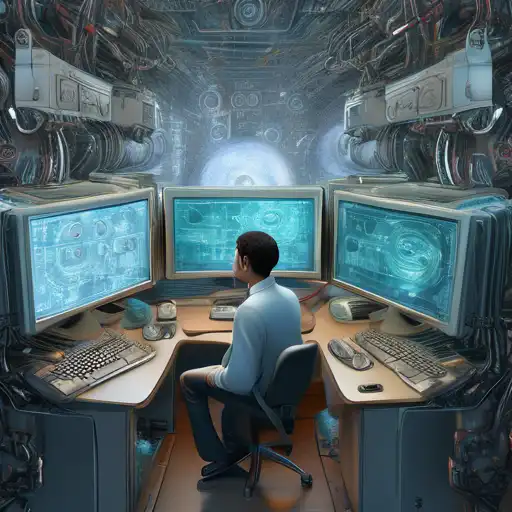Empowering Machines with Sight: The Evolution of Computer Vision
In the realm of artificial intelligence, computer vision stands as a groundbreaking technology that enables machines to interpret and understand the visual world. By leveraging digital images from cameras and videos and deep learning models, machines can accurately identify and classify objects—and then react to what they "see."
The Foundation of Computer Vision
At its core, computer vision seeks to replicate the complexity of human vision. It involves the automatic extraction, analysis, and understanding of useful information from a single image or a sequence of images. This process is achieved through a combination of hardware and software that work together to allow computers to process visual data at an unprecedented scale.
How Computer Vision Works
Computer vision systems use algorithms to perform tasks such as object detection, facial recognition, and motion analysis. These systems are trained on vast datasets of images, enabling them to learn and improve over time. Key technologies behind computer vision include convolutional neural networks (CNNs), which are particularly effective for processing pixel data.
Applications of Computer Vision
The applications of computer vision are vast and varied, spanning across industries. Here are a few notable examples:
- Healthcare: From diagnosing diseases through medical imaging to assisting in surgeries, computer vision is revolutionizing patient care.
- Automotive: Self-driving cars rely on computer vision to navigate roads safely, recognizing traffic signs, pedestrians, and other vehicles.
- Retail: Computer vision enhances shopping experiences through cashier-less stores and personalized recommendations based on visual search.
- Security: Surveillance systems use computer vision for facial recognition and anomaly detection to enhance public safety.
The Future of Computer Vision
As technology advances, the potential for computer vision continues to expand. With the integration of augmented reality (AR) and virtual reality (VR), computer vision is set to create more immersive and interactive experiences. Furthermore, ongoing research in AI and machine learning promises to overcome current limitations, opening new frontiers for this transformative technology.
Computer vision is not just about teaching machines to see; it's about enabling them to understand and interact with the world in ways that were once the sole domain of humans. As we continue to explore its possibilities, the future of computer vision looks brighter than ever.
For more insights into how artificial intelligence is shaping our world, check out our articles on machine learning and deep learning.
